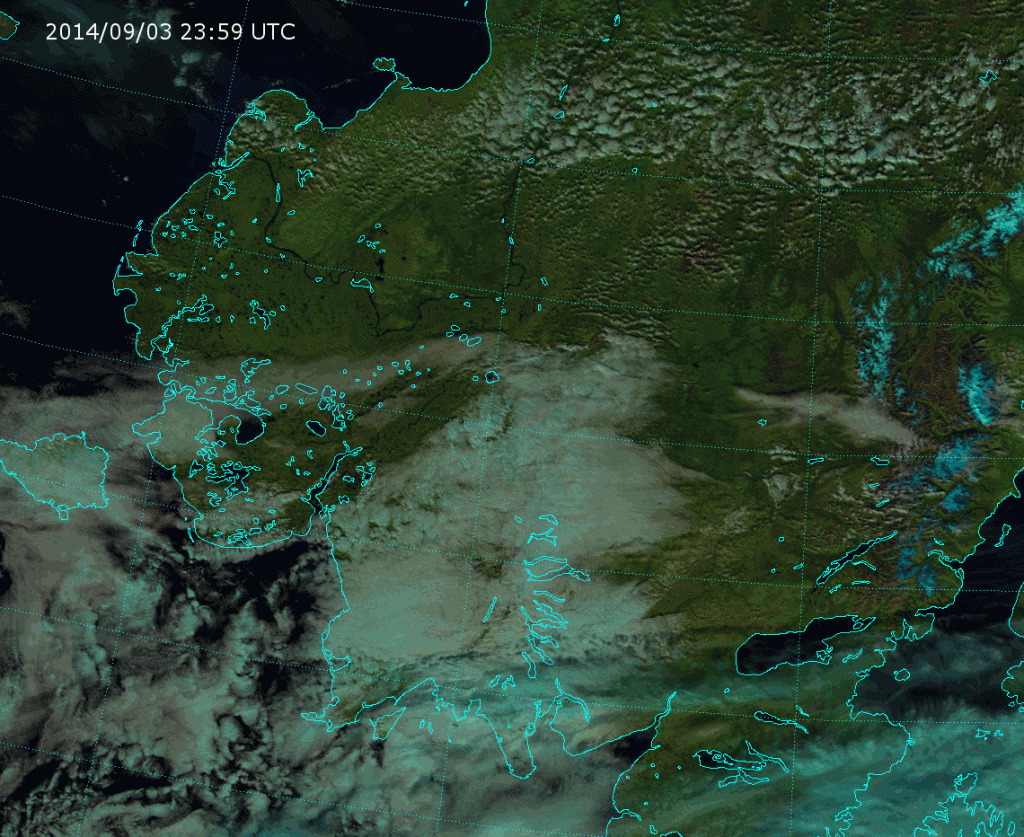Oh, Yakutsk! It has been a long time – 2012, to be exact – since we last spoke about you (on our sister blog). It was a different time back then, with me still referring to the EUMETSAT Natural Color RGB as “pseudo-true color”. (Now, most National Weather Service forecasters know it as the “Day Land Cloud RGB”). VIIRS was a only a baby with less than one year on the job. Back then, the area surrounding the “Coldest City on Earth” was on fire. This time, we return to talk about ice.
You see, rivers near the Coldest City on Earth freeze during the winter, as do most rivers at high latitudes. Places like the Northwest Territories, the Yukon, Alaska and Siberia use this to their advantage. Rivers that are frozen solid can make good roads, a fact that has often been overly dramatized for TV. Transporting heavy equipment may be better done on solid ice in the winter than on squishy, swampy tundra in the summer. But, that comes with a cost: ice roads only work during the winter.
In remote places like these, with few roads, rivers are the lifeblood of transportation – acting as roads during the winter and waterways for boats during the summer. But, what about the transition period that happens each spring and fall? Every year there is a period of time where it is too icy for boats and not icy enough for trucks. Monitoring for the autumn ice-up is an important task. And, perhaps it is more important to monitor for the spring break-up of the ice, since the break up period is often associated with ice jams and flooding.
We’ve covered the autumn ice up before on this blog, but VIIRS recently captured a great view of the spring break up near Yakutsk, that will be our focus today.
We will start with the astonishing video captured by VIIRS’ geostationary cousin, the Advanced Himawari Imager (AHI) on Himawari-8 from 18 May 2018:
The big river flowing south to north in the center of the frame is the Lena River. (Yakutsk is on that river just south of the easternmost bend.) The second big river along the right side of the frame is the Aldan River, which turns to the west and flows into the Lena in the center of the frame.
Now that you are oriented, take a look at that video again in full screen mode. If you look closely, you will see a snake-like section of ice flowing from the Aldan into the Lena. This is exactly the kind of thing river forecasters are supposed to be watching for during the spring!
Of course, this is a geostationary satellite, which provides good temporal resolution, but not as good spatial resolution. The video is made from 1-km resolution imagery, but we are looking at high latitudes on an oblique angle, so the resolution is more like 3-4 km here. (Note: the scene in the video above is approximately the same latitude as the Yukon River delta, so this acts as a good preview of what GOES-17 and its Advanced Baseline Imager [ABI] will offer.) So, how does this look from the vantage point of VIIRS, which provides similar imagery, but at 375 m resolution? See for yourself:
(You will have to click on the image to get the animation to play.)

This animation includes both Suomi NPP and NOAA-20 VIIRS. That gives us ~50 min. temporal resolution to go with the sub-kilometer spatial resolution. Eagle-eyed viewers can see how the resolution changes over the course of the animation, as the rivers start out near the left edge of the VIIRS swath (~750 m resolution), then on subsequent orbits, the rivers are near nadir (~375 m resolution) and then on the right edge of the swath (~750 m resolution again). In any case, this is better spatial resolution than AHI can provide (or ABI will provide) at this latitude.
One thing you can do with this animation is calculate how fast the ice was moving. I estimated the leading edge of the big “ice snake” moved about 59 pixels (22.3 km at 375 m resolution) during the 3 hour, 21 minute duration of the animation. That works out to an average speed of 6.7 km/hr (3.6 knots), which doesn’t seem unreasonable. Counting up pixels also indicates our big “ice snake” is at least 65 km long, and the Aldan River is nearly 3 km wide in its lower reaches when it meets the Lena River. That is in the neighborhood of 200 km2 of ice!
That much ice moving at over 3 knots can do a lot of damage. Just look at what the ice on this much smaller river did to this bridge:
(Make sure you watch it all the way to the end!)




